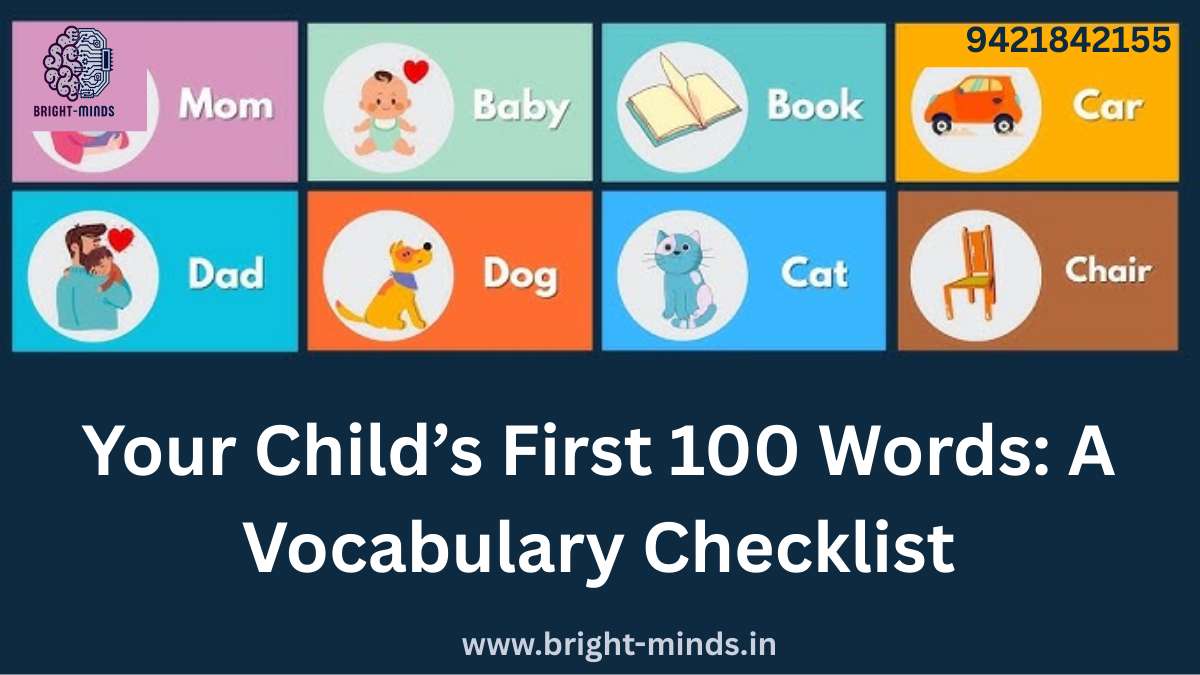When it comes to your child’s early development, few milestones are as thrilling as hearing their first words. That tiny voice saying “Mama” or “Ball” is more than adorable — it’s a powerful indicator of cognitive growth and a crucial step toward lifelong learning. But how do you know what words your child should be learning, and when? Enter: Your Child’s First 100 Words: A Vocabulary Checklist — a powerful tool for parents, educators, and caregivers.
In this guide, we’ll break down why those first 100 words matter, how to introduce them, and the broader impact of early language development on future success. Whether you’re a parent just beginning this journey or a team member at an early childhood education company, this blog offers key insights, market trends, and actionable tips to help you support children on the path to literacy and lifelong learning.
Why the First 100 Words Matter
The first 100 words are the foundation of all future language. Research shows that a child’s vocabulary at age 2 is a strong predictor of their reading success in elementary school. These early words form the basis for more complex communication skills — including comprehension, social interaction, and emotional expression.
Many of these early words are nouns and verbs: “dog,” “eat,” “go,” “milk,” “book.” Others include everyday social words like “hi,” “bye,” or “please.” These are not just words — they are building blocks of understanding, creating pathways in the brain for learning and memory.
Market Trends: The Growing Demand for Early Learning Tools
In the age of educational technology and parent-driven learning, tools like vocabulary checklists are becoming more popular. The global market for early childhood education is booming, projected to reach over $480 billion by 2030. Parents are increasingly seeking structured ways to track developmental milestones — and that’s where vocabulary checklists come in.
Apps, flashcards, and interactive books featuring the “First 100 Words” concept are flying off shelves and topping download charts. Why? Because they empower parents to be proactive. They’re simple, measurable, and evidence-based — all key elements in today’s results-driven learning environment.
Real-World Impact: From Playtime to Progress
Let’s talk real-world application. Imagine a parent using a “First 100 Words” checklist taped to the fridge. Every time their child says a new word, they check it off. It turns into a fun game, one that both parent and child look forward to. Over time, that checklist becomes a record of achievement — and more importantly, a motivator.
Now imagine a preschool teacher using the same checklist to monitor the vocabulary development of 20 toddlers. They can quickly identify who might need extra support, communicate more effectively with parents, and personalize learning strategies — all using the same simple list.
That’s the beauty of the checklist: it’s scalable, adaptable, and universally applicable.
Practical Tips for Teaching Your Child Their First 100 Words
You don’t need a PhD in child psychology to teach your child new words. Here are some easy, practical ways to start building that first vocabulary:
1. Talk Constantly
Even if your child isn’t talking back yet, narrate your actions. Say, “Now we’re putting on your shoes. Look, shoes!”
2. Read Daily
Board books like First 100 Words or Brown Bear, Brown Bear are excellent for repetition and visual association.
3. Use Labels
Put sticky notes on everyday items with the word printed clearly: “door,” “table,” “mirror.” Say the word every time you pass by it.
4. Sing Songs
Nursery rhymes and songs like “Old MacDonald” introduce rhythm and repetition — key elements in vocabulary learning.
5. Repeat and Reinforce
When your child says a word, repeat it back: “Yes, that is a dog! Look at the dog go!” Repetition strengthens memory.
6. Encourage Interaction
Ask open-ended questions: “What do you see?” or “Where’s the ball?” — even if they can’t answer yet, it sets the stage for dialogue.
Empowering Employees: Why It Matters to Us
If you’re part of an educational company, understanding this checklist isn’t just about product development — it’s about impact. Every team member, from marketers to customer service reps, should grasp why these early learning tools are important. When you understand how these products affect real families, you market them more authentically, support customers more empathetically, and innovate more effectively.
Think of it this way: every word a child learns is a step toward unlocking their full potential. And every tool we create to support that journey is a small piece of a much bigger future.
Start Now: The First Step Toward Lifelong Learning
The journey to literacy doesn’t start in kindergarten — it begins at home, with the first 100 words. Whether you’re a parent looking to guide your child or an employee seeking to better understand our mission, remember this: small words lead to big futures.
It might be helpful:
Unlock Your Child’s Curiosity with These Exciting GK Questions!
Unlock Your Child’s Curiosity with These Exciting GK Questions!

